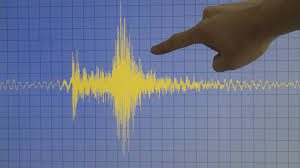
Oklahoma is no longer experiencing as many of the strong earthquakes it once did. A review of data from the Oklahoma Geological Survey showed a drop in the number of earthquakes stronger than 3.0 magnitude in 2019 for a fourth consecutive year.
The survey recorded 62 such strong quakes last year, far below the 203 reported in 2018 and dramatically fewer than the 903 reported in 2015. Oklahoma recorded only one 4.5 earthquake in 2019 and that was in May near Medford in the northern part of the state.
Oklahoma hasn’t been below 100 for 3.0 quakes in a year since prior to 2013, which until 2019 also was the last time the state experienced a single 4.0 in a year. The most 4.0s in a year was 27 in 2015 according to the Tulsa World.
However, the state’s quake hazards remain elevated, with the seismicity rate well above the historical average of two or three 3.0s a year. The last time that average hit was in 2008 with two.
The U.S. Geological Survey updated its long-term hazard model in late November, placing Oklahoma at a 4% to 19% of a slight or greater damaging earthquake in 100 years. The scientists used a methodology to exclude induced seismicity, writing that its rapid changes in short time spans wasn’t appropriate for far future projections.
Scientists point to deep wastewater disposal wells as the catalyst for Oklahoma’s unprecedented man-made earthquakes. A 15,000-square-mile area in central and western Oklahoma is under restrictions designed to curtail disposal into the deepest wells to limit induced seismicity.
Four of the state’s five largest quakes have happened in the past decade, including a 5.7 near Prague in 2011. A state appeals court in November affirmed a district court’s decision to certify a class-action lawsuit against oil and gas companies.
There are petitions in state district courts seeking class-action status for the 5.8 and 5.0 quakes in 2016 near Pawnee and Cushing, respectively.
Source: Tulsa World





